Top UNESCO World Heritage Sites in Africa You Must Visit
Africa boasts 112 UNESCO World Heritage Sites (as of 2025), spanning cultural, natural, and mixed wonders across more than 37 different countries. These sites range from ancient ruins and sacred places to vast national parks teeming with wildlife.
Let’s dive into everything you should know about UNESCO Sites in Africa, how to discover them, and what makes them truly unique.
Why Visit UNESCO Sites in Africa?
Africa holds a unique and crucial place in human history and natural heritage. Exploring its UNESCO sites offers profound experiences you won't find anywhere else. Here’s why they’re worth your time:
- Global significance: These places matter to all of humanity.
- Unique experiences: From ancient ruins to wildlife safaris.
- Preservation: Your visit supports conservation and local communities.
How Many UNESCO Sites Are in Africa?
As of 2025, Africa is home to 112 UNESCO World Heritage Sites: 63 cultural, 44 natural, and 5 mixed. UNESCO World Heritage Sites are landmarks recognized for their cultural, historical, scientific, or natural significance. They’re protected because they represent humanity’s shared heritage. These include:
- Cultural sites (e.g., ancient cities, rock art, sacred architecture)
- Natural sites (e.g., national parks, mountains, deserts)
- Mixed sites (combining both cultural and natural value)
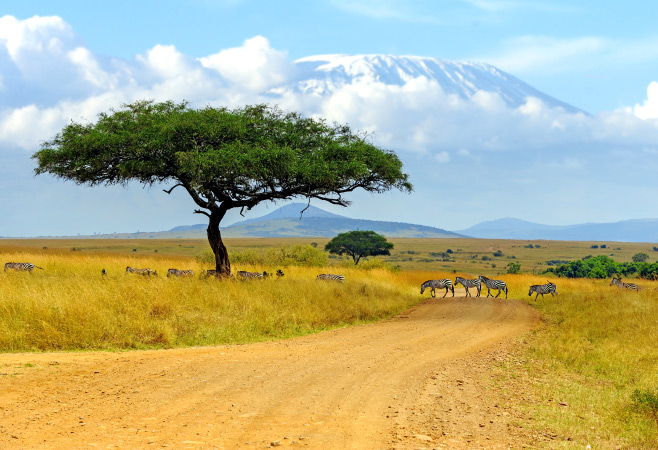 Visit Mount Kenya National Park: Marvel at Africa’s cultural and natural marvels—UNESCO Sites that deserve a spot on your bucket list
Visit Mount Kenya National Park: Marvel at Africa’s cultural and natural marvels—UNESCO Sites that deserve a spot on your bucket list
List 13 Best UNESCO Sites in Africa You Shouldn’t Miss
Let’s explore some of the most iconic cultural sites that tell Africa’s story.
Top Cultural UNESCO Sites in Africa
1. Great Zimbabwe National Monument (Zimbabwe)
This ancient city was once the capital of a powerful kingdom. Built between the 11th and 15th centuries, it features impressive stone walls without mortar.
2. Rock-Hewn Churches of Lalibela (Ethiopia)
These 11 medieval churches were carved directly into rock in the 12th century. Pilgrims still visit them today, making Lalibela a living spiritual center.
3. Timbuktu (Mali)
Known as a center of learning in the 15th and 16th centuries, Timbuktu was a key stop on the trans-Saharan trade route. Its ancient manuscripts and mud-built mosques are UNESCO treasures.
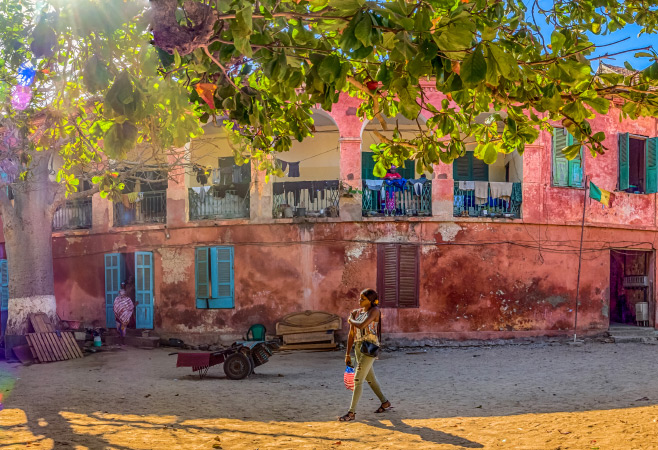 Visit The island of Gorée in Senegal: Every UNESCO Site in Africa is a passport to the continent’s past, present, and promise
Visit The island of Gorée in Senegal: Every UNESCO Site in Africa is a passport to the continent’s past, present, and promise
4. Island of Gorée (Senegal)
A powerful reminder of the Atlantic slave trade, this small island features colonial buildings and the haunting House of Slaves museum.
Must-Visit Natural UNESCO Sites in Africa
5. Serengeti National Park (Tanzania)
World-famous for the Great Migration, this vast ecosystem is home to lions, elephants, zebras, and wildebeest. It’s one of the best safari destinations in Africa.
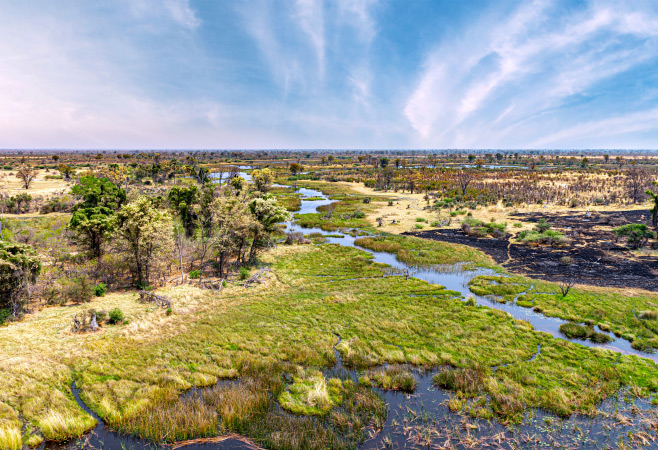 Visit the Okavango Delta in Botswana: UNESCO Sites in Africa redefine beauty and resilience.
Visit the Okavango Delta in Botswana: UNESCO Sites in Africa redefine beauty and resilience.
6. Okavango Delta (Botswana)
A unique inland delta where wildlife and water meet. Think elephants wading through lagoons and hippos basking in crystal-clear channels.
7. Mount Kilimanjaro National Park (Tanzania)
Africa’s highest peak stands tall in this protected park. Whether you're hiking or just admiring from a distance, it’s an awe-inspiring sight.
8. Simien Mountains National Park (Ethiopia)
Often called the “Roof of Africa,” these rugged highlands are home to rare species like the Ethiopian wolf and gelada monkeys.
Mixed UNESCO Sites in Africa
9. Maloti-Drakensberg Park (Lesotho & South Africa)
Combining natural beauty with ancient San rock art, this site is perfect for hikers, nature lovers, and history buffs alike.
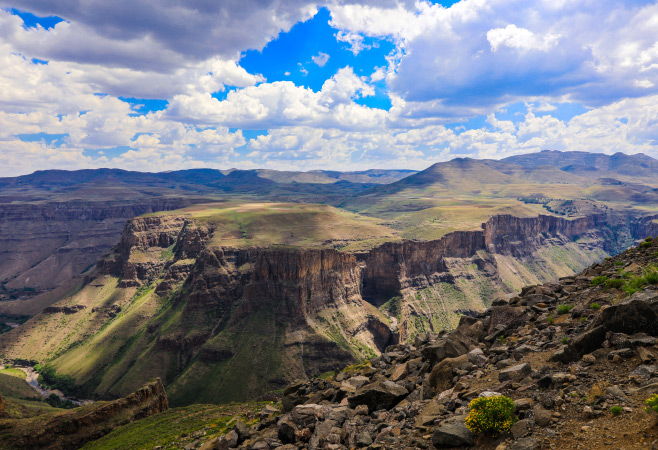 Visit Maloti-Drakensberg Park: Ancient wonders and wild landscapes—UNESCO Sites in Africa are where history meets heritage
Visit Maloti-Drakensberg Park: Ancient wonders and wild landscapes—UNESCO Sites in Africa are where history meets heritage
10. Mount Nimba Strict Nature Reserve (Guinea, Liberia & Côte d'Ivoire)
With rare flora and fauna and significant geological formations, this reserve is both culturally and naturally important.
Lesser-Known But Worth Visiting UNESCO Sites
11. Asante Traditional Buildings (Ghana)
These clay and straw shrines are the last remains of the Asante Empire’s architecture and hold deep cultural importance.
12. Sukur Cultural Landscape (Nigeria)
A hilltop settlement with a palace, stone terraces, and ancient iron smelting technology—an impressive blend of culture and history.
13. Aïr and Ténéré Natural Reserves (Niger)
One of the largest protected areas in Africa, it features desert landscapes and endangered species like the addax antelope.
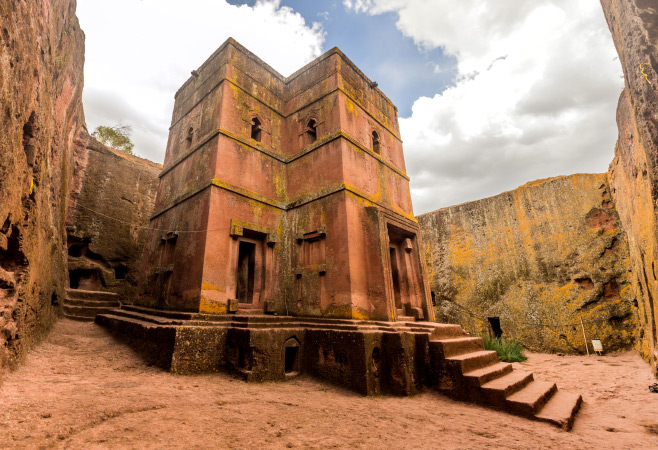 Visit the Rock-Hewn Churches of Lalibela: Preserved by time, protected by UNESCO—Africa’s heritage sites are treasures for the world.
Visit the Rock-Hewn Churches of Lalibela: Preserved by time, protected by UNESCO—Africa’s heritage sites are treasures for the world.
How to Visit UNESCO Sites in Africa
Best Time to Visit
Dry Season for Wildlife: For natural parks like the Serengeti or Okavango Delta, the dry season (typically June to October) is best for wildlife viewing as animals congregate around water sources.
Cooler Months for Cultural Sites: For historical and cultural sites (like in Egypt or Mali), visiting during cooler months (e.g., October to April) can be more comfortable.
More details:
- East Africa (e.g., Tanzania, Ethiopia): June to October (dry season)
- West Africa (e.g., Mali, Ghana): November to March
- Southern Africa (e.g., Botswana, Zimbabwe): May to September
Planning Your Trip to African UNESCO Sites
Visiting these incredible sites requires thoughtful planning to ensure a rewarding experience.
Research & Logistics
- Visas: Check visa requirements for each country you plan to visit well in advance.
- Transport: Consider domestic flights, reliable tour operators, or local transport options between sites. Some remote sites may require specialized transport.
- Local Guides: Hiring local, certified guides can greatly enhance your understanding and safety at many sites.
Responsible Tourism
- Respect Local Customs: Always be mindful of local traditions, dress codes, and social norms.
- Support Local Economies: Choose local guides, accommodations, and craftspeople where possible.
- Leave No Trace: Follow guidelines to protect the natural and cultural integrity of these irreplaceable sites.
Frequently Asked Questions About UNESCO Sites in Africa
Which African Country Has the Most UNESCO Sites?
Ethiopia and South Africa lead the continent with 12 UNESCO World Heritage Sites each, followed by Morocco and Tunisia with 9 each, while Algeria, Egypt, Senegal, and Tanzania each have around 7.
Is It Safe to Visit These Sites?
Many UNESCO sites are popular tourist destinations with good infrastructure. However, always check travel advisories and seek up-to-date information about safety in specific regions.
Are All Sites Open to Tourists?
Most are open to visitors, but access can vary by season or due to restoration work. It’s always best to check ahead before planning your visit.
UNESCO Sites in Africa offer an extraordinary journey through humanity's shared legacy and the planet's most stunning natural wonders. They are essential stops for anyone seeking to understand the world's diverse beauty and profound history.
Related Articles
- Ivory Coast Birdwatching: Where Are Best Spots & Species
- Top Kitesurfing Spots in Ivory Coast: Where and When
- Ivory Coast Visa and Travel Advisory Updates for Tourists
- Ivory Coast Desserts: Must-Try Dishes for Travelers
- Top African Airports Every Traveler Should Know
- Visa-Free Travel to the Ivory Coast - Things to Know
- Top Outdoor Activities to Experience in the Ivory Coast
- Top Must-Do Activities in the Man Region You Can’t Miss
- Best eSIM for Ivory Coast Travel: Everything You Need to Know
- Hiking Mount Nimba: Trails, Wildlife, and Conservation Info
HOW CAN WE HELP?
APPLY WITH CONFIDENCE
|











